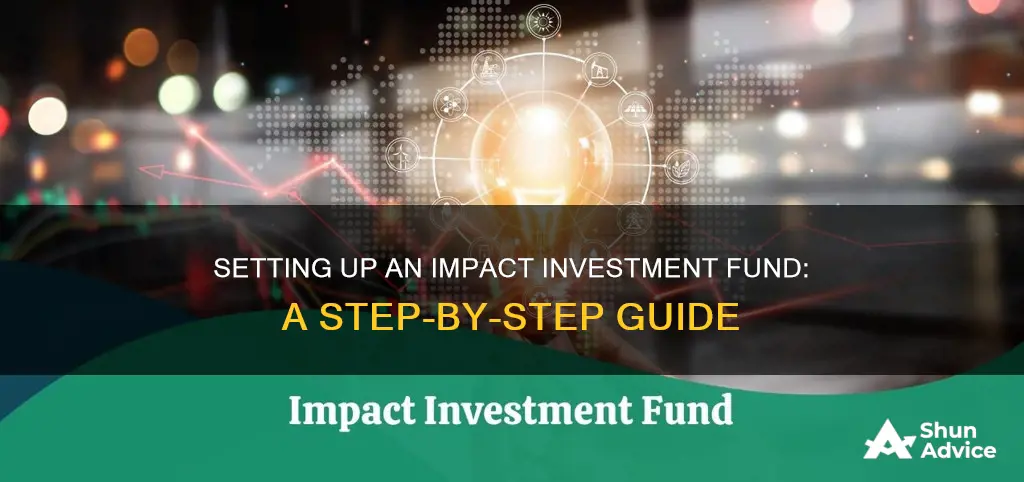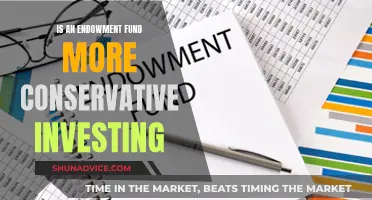
Impact investing is a strategy that seeks to generate both financial returns and positive social or environmental outcomes. It involves directing capital towards ventures that are expected to yield social and environmental benefits alongside profits. While the concept of impact investing is still relatively new, it has gained significant momentum in recent years, with investors increasingly seeking to do well by doing good.
This type of investment approach marks a shift from traditional investment strategies that solely focus on financial gains without considering the social and environmental consequences. Impact investing offers a way for investors to address pressing global challenges, such as climate change, inequality, and resource scarcity, while also aiming for competitive financial returns.
Setting up an impact investment fund requires careful planning and a unique value proposition to attract investors. It is essential to differentiate your fund from others in the market and effectively communicate your investment thesis and impact goals.
1. Start early: Begin contacting investors as soon as possible as the process of identifying potential investors, presenting your proposal, and completing due diligence can take several months.
2. Develop a compelling executive summary: Create a concise and practical executive summary that highlights the characteristics of your fund, investment conditions, and your unique value proposition.
3. Differentiation and storytelling: The impact investment space is growing, so it's crucial to differentiate your fund and convey your philosophy effectively. Informal and casual meetings with investors can be more successful than traditional presentations.
4. Provide specific examples: Not all investors may be familiar with impact investing, so use specific examples of successful companies that have achieved social and environmental impacts while also being profitable.
5. Proactivity and persistence: Most investors exploring impact investing have set aside a small portion of their portfolios, so proactive and persistent management is crucial to get your proposal noticed.
6. Balance institutional and philanthropic investors: There is a disequilibrium in the available capital for impact investment funds. Aim to develop a strategy that attracts both development banks and philanthropic foundations.
7. Flexibility: Impact investing is an evolving concept, so it's important to remain flexible and open-minded when discussing fund terms with potential investors.
| Characteristics | Values |
|---|---|
| Start early | Contact investors as soon as possible |
| Generate an executive summary | A two-page summary of the fund characteristics, investment conditions, and value proposition |
| Differentiate | Communicate what makes your fund unique |
| Create a story | Convey the philosophy behind impact investing in an informal setting |
| Have specific examples | Provide examples of successful companies with social and environmental impacts |
| Be proactive | Cold-call investors with a clear proposal |
| Balance institutional and philanthropic investors | Attract both development banks and philanthropic foundations |
| Be flexible | Have an open mind when discussing fund terms with investors |
| Learn the lingo | Educate yourself about the terminology used in impact investing |
| Start the conversation | Initiate the conversation about impact investing with your financial advisor or wealth manager |
| Start small | Even if you start with a small amount, start now |
What You'll Learn

Learn the lingo and do your research
Educate yourself about the acronyms and terminology used in the impact-investing sphere. There are many different ways to participate in impact investing, so having a basic level of knowledge about the terminology will help you evaluate your choices and figure out what makes sense for you.
Start with fundamental questions such as "What does this terminology mean?" and "What is a sustainable US index?" and meet people and ask more questions.
You'll come across terms such as "asset allocation", which is the process of dividing investments among cash, income and growth buckets to optimise the balance between risk and reward based on investment needs. "Asset class" is another key term – these are securities with similar features, most commonly stocks, bonds and cash equivalents.
"Impact investing" is a sustainable investment style that seeks to generate measurable positive social or environmental impact alongside financial returns. "Environmental, social and governance (ESG) integration" is the systematic inclusion of financially material ESG factors in investment analysis and investment decisions, with the goal of enhancing long-term, risk-adjusted financial returns.
"Socially Responsible Investing (SRI)" goes a step further than ESG by eliminating or selecting investments according to specific ethical guidelines. For example, SRI investors may avoid companies that produce or sell alcohol, tobacco or firearms.
"Alpha" is the amount of return expected from an investment from its inherent value, while "beta" is a measurement of volatility.
"Blue chip" is a term for a high-quality, relatively low-risk investment, usually referring to stocks from large, well-established companies with a good track record.
"Growth investing" is an investment strategy that focuses on stocks of companies and stock funds where earnings are growing rapidly and expected to continue to grow.
"Load" is a sales charge on mutual funds, which can be back-end or front-end. No-load funds are free of sales charges.
"Market risk" is the possibility that an investment will not achieve its target, while "interest-rate risk" is the possibility of a reduction in the value of a security resulting from a rise in interest rates.
"Proxy" is a shareholder vote on matters that require shareholders' approval.
"Yield" is the annual percentage rate of return on capital, or the dividend or interest paid by a company expressed as a percentage of the current price.
These are just some of the key terms you'll come across when learning about impact investing. It's important to do your research and understand the lingo so you can make informed decisions about your investments.
Mutual Funds: Smart, Diverse, and Accessible Investment Vehicles
You may want to see also

Start the conversation with relevant stakeholders
When starting the conversation with relevant stakeholders about setting up an impact investment fund, it's important to be clear about your motivations and what you hope to achieve. This involves exploring key considerations such as “Why”, “What”, “How”, “When”, and “Who”. Being explicit about your intentions will help guide your decisions and shape your impact investing strategy.
- Why are you interested in impact investing? Are you primarily focused on social impact, attracted to the power of market forces for social good, or interested in financial returns? Understanding your underlying motivations will help align the interests of all stakeholders involved.
- What kind of change do you want to create through your impact investments? Do you want to focus on broad categories such as poverty, health, education, or climate change? Or do you want to further define your focus within these categories? For example, within education, you might want to look at companies delivering innovative educational technology.
- How will you assess your progress and measure the success of your impact investments? It's important to think about this upfront as it will shape your evaluation framework, investment selection, and overall strategy.
- When do you hope to see social change and financial returns? Impact investments with higher risk tolerance often lead to longer time horizons. It's crucial to consider the desired timeframes for both social impact and financial returns.
- Who else will be involved in the process? This could include family members, investment or social change advisors, and board members. Engaging the right people and building consensus among stakeholders are essential for the success and growth of your impact investment fund.
Additionally, when starting these conversations, consider the following:
- Start early: Begin contacting potential investors as soon as possible. The process of identifying investors, establishing contact, presenting your proposal, and completing due diligence can take more than six months on average.
- Generate a concise and compelling executive summary: A well-crafted two-page executive summary that highlights the key characteristics of your fund, investment conditions, and your unique value proposition can spark interest and generate conversations with potential investors.
- Differentiate yourself: The impact investment space is growing, so it's crucial to communicate what sets you apart. Be clear about your niche and what makes your fund unique to attract investors who want to see a strong value proposition.
- Create a narrative: Instead of traditional presentations, opt for informal conversations to convey the philosophy behind impact investing and your fund's approach. This type of environment often fosters better advice and feedback, helping you refine your ideas.
- Have specific examples: Not all investors are familiar with impact investing, so use concrete examples of successful companies that have made significant social and environmental impacts while also being profitable.
Tax-Efficient Fund Investing: Strategies for Smart Returns
You may want to see also

Identify your niche and differentiator
Finding your niche and differentiator is key to standing out from the hundreds of other fund managers. You need to be able to communicate what makes your impact investment fund unique and attractive to potential investors. Ask yourself: What do we do differently? What value do we bring to the investor? Why should they add us to their portfolio?
Your niche should be a specific segment of the market or industry that you focus on and specialize in. It can be based on various criteria, such as geography, sector, size, stage, strategy, or impact. For example, you might target emerging markets, healthcare, small and medium enterprises, growth equity, or social enterprises.
When identifying your niche, it's important to assess your strengths and weaknesses to narrow down your options and avoid unsuitable areas. Conduct extensive research on market and industry trends to identify potential gaps or needs that are not being addressed by existing funds. Reach out to your network and potential stakeholders for feedback to refine your niche and adjust your approach.
Once you've identified your niche, be prepared to explain why you are the most qualified to respond to this opportunity. Demonstrate your understanding of the market potential for the businesses you will be supporting. Are there new champions emerging? Have there been successful exits? What are the value drivers? How does the local competition of comparable funds and lenders look?
Remember, investors want to see the value proposition and what makes your fund unique. Be able to communicate these characteristics quickly and attractively for the best chance of success.
Pension Fund Investment: A Guide to Getting Started
You may want to see also

Create a compelling story to attract investors
Creating a compelling story is essential for attracting investors to your impact investment fund. Here are some tips to help you craft a narrative that will resonate with potential investors:
Differentiate Yourself
The impact investment space is growing, and investors want to understand your unique value proposition. What sets your fund apart from others? Are there specific social or environmental causes you focus on? Be clear about your niche and what makes you different. Be honest and humble, and avoid overstating the impact or reach of your fund.
Tell a Comprehensive Story
Your investment story should not be solely about a single fund or strategy. Instead, create a compelling narrative that explains the specific investment results you aim to achieve and how they fit into an investor's portfolio. Outline the strategies and methodologies you will use to achieve these results, and showcase the qualifications and expertise of your team. Ensure your story is coherent, consistent, and richly descriptive.
Keep it Simple and Conversational
Avoid filling your pitch with technical jargon or overused phrases. Use clear, concise, and descriptive language that is easy for your audience to understand. Your story should be simple enough for a portfolio manager or salesperson to explain in a conversational manner in just a couple of minutes.
Provide Specific Examples
Not all investors may be familiar with impact investing, so use concrete examples to illustrate your points. Share success stories of companies that have made a significant social or environmental impact while also being profitable. This will help investors understand the potential for both financial gains and positive societal outcomes.
Be Flexible and Proactive
Impact investing is a relatively new concept, and investors may have concerns or hesitations. Be prepared to address these by being flexible and open-minded when discussing the terms of your fund. Be proactive and persistent in your outreach, but respect the time and resources of potential investors.
Informal Conversations
Instead of traditional presentations, opt for informal and casual conversations with investors. This type of environment allows you to build a connection, convey your passion, and explain the philosophy behind impact investing and your fund. It also creates a space for valuable feedback and advice.
Muni Bond Funds: A Guide to Investing Wisely
You may want to see also

Provide specific examples of successful companies with positive social and environmental impacts
When creating an impact investment fund, it is important to have specific examples of successful companies with positive social and environmental impacts. Here are some examples of companies that have demonstrated a strong commitment to social and environmental initiatives:
- Adidas: Adidas's corporate responsibility structure is built on three complementary pillars: community involvement, employee engagement, and corporate giving. They have launched various programs worldwide, such as the BOKS by Reebok before-school program, which brings access to fitness to children between the ages of 5 and 12, and the Pakison Women Empowerment Program, which helps improve the skills of female workers and finds them strong opportunities in the workplace.
- A-LIGN: A-LIGN works with its clients to support local charities and give back to the community. During the holiday season, the company donates to charities like Junior Achievement and ASPCA, and throughout the year, they encourage employees to partake in community service events, providing a day off every month for this purpose.
- Ben & Jerry's: Ben & Jerry's has a long history of promoting grassroots efforts for social justice, protecting the environment, and supporting sustainable food systems. They have partnered with social equality groups and launched initiatives such as "Justice ReMix'd," which focuses on criminal justice system reform and the disproportionate impact on people of color.
- Disney: Disney has implemented zero net direct greenhouse gas emission policies within all its facilities and is working to reduce indirect greenhouse gas emissions through electrical consumption reduction. They also have a zero-waste policy, ensuring that nothing ends up in landfills, and use technology that saves water.
- Google: Google has made significant environmental and ethical initiatives, such as achieving 100% renewable energy in 2017 and committing to sourcing conflict-free minerals. They have also pledged to donate $1 billion to nonprofits in five years and provide 1 million hours of employee volunteering.
- Ford Motor Company: Ford has implemented a ten-part environmental policy, using sustainable fabrics in its vehicles and ensuring that 80% of its Focus and Escape vehicles are recyclable. They focus on fuel efficiency and use geothermal cooling systems in their plants.
- Starbucks: Starbucks embraces principles of environmental sustainability and aims to reduce its impact on the environment. They purchase Fair Trade Certified and Certified Organic coffee and work towards achieving LED certifications for their new outlets. Starbucks also has a green building strategy that includes adjusting temperatures and purchasing cabinetry made with post-industrial materials.
A Guide to Investing in Mutual Funds via Zerodha Kite
You may want to see also
Frequently asked questions
Impact investing is a type of investment that seeks to generate both financial return and social or environmental impact. Impact investments are made in companies, organisations, and funds with the intention to generate a measurable, beneficial social or environmental impact alongside a financial return.
Impact investments have dual objectives: they aim to achieve financial returns and positive social or environmental outcomes. Impact investing also requires the measurement and reporting of both financial performance and social/environmental results, ensuring accountability and the genuine pursuit of dual objectives.
Traditional investment strategies focus solely on financial gains, without considering the social and environmental consequences. Impact investing marks a shift from these traditional strategies by directing capital to ventures that are expected to yield social and environmental benefits as well as profits.
Here are some key steps to starting an impact investment fund:
- Learn the lingo and do your research to understand the different ways to participate in impact investing.
- Start the conversation with potential investors and let them know about your interest in exploring options for impact investing.
- Find your niche and your differentiator. Identify what makes your fund unique and how it adds value to investors.
- Start early and begin contacting investors as soon as possible. The process of identifying potential investors, establishing initial contact, presenting your proposal, and completing due diligence can take more than six months.
- Create a practical and concrete executive summary that briefly describes the characteristics of your fund, the conditions of investment, and your value proposition.
Impact investing can be done across various sectors, including renewable energy, affordable housing, healthcare, education, microfinance, and sustainable agriculture. For example, investing in renewable energy projects, such as solar or wind farms, to reduce reliance on fossil fuels and combat climate change. Another example is investing in affordable housing initiatives to address housing shortages and improve access to safe and affordable homes for low-income individuals.







